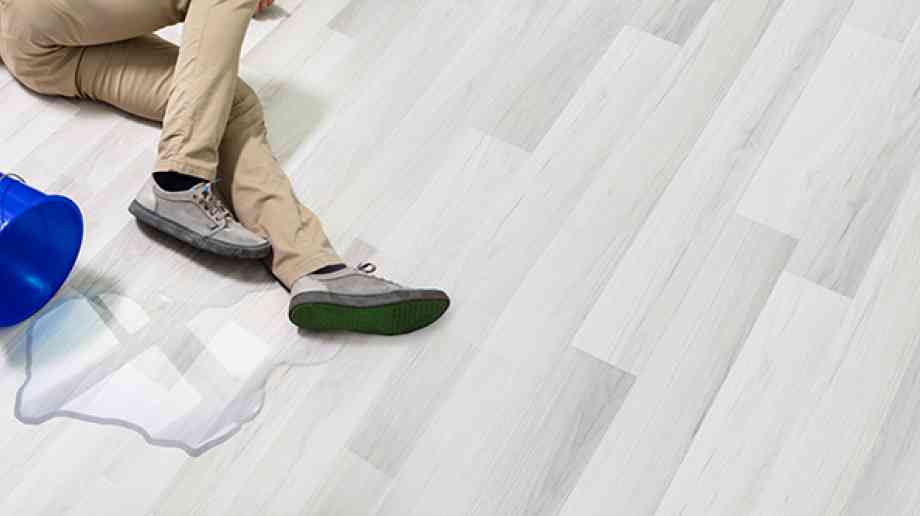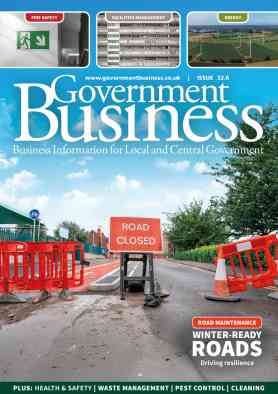
Slips and trips
Saeed Ahmadi, of the Institution of Occupational Safety and Health (IOSH), examines the issue of slips, trips and falls and how organisations can prevent them from happening
Slips, trips and falls are a common cause of workplace accidents and injuries all over the world.
Based on an International Labour Organisation (ILO) survey, they cause over a third of all major injuries in workplaces and can lead to other types of accidents, such as falls from height or falls into other hazardous conditions. The same survey also highlighted that slips and trips account for half of all reported injuries to members of the public in workplaces where there is public access. This includes hospitals, shops, and restaurants.
The UK itself is no different. Statistics published in the UK by the Health and Safety Executive showed that in 2021-22, slips, trips and falls accounted for 30 per cent of accidents which caused injuries in workplaces. This is in comparison with handling, lifting and carrying (18 per cent), being struck by a moving object (11 per cent), acts of violence (nine per cent) and falls from height (eight per cent).
Why is this happening? In busy environments with lots of foot traffic, flooring problems can quickly develop into dangerous hazards. From spillages to uneven wear of the floor or the ground surface, it’s crucial that those in control of workplaces and public places take proactive steps to prevent and deal with these issues before they cause a serious problem.
In almost all slip and trip incidents, contamination is involved in some form. For example, obstructions on walkways or uneven surfaces usually cause trips. Slips and trips can both result in a fall that occurs at the same level, as well as a fall from height in some circumstances.
But, as with other health and safety risks, it doesn’t have to be this way. Measures to prevent slips and trips are often simple and cost-effective for organisations – and much preferable to an incident actually happening and the personal and organisational fallout that happens as a consequence.
The place to start is by undertaking a risk assessment to identify hazards – this is an effective preventative strategy as you can’t manage the hazards if you don’t know what they are.
Hazard Identification
Slips happen when someone is moving, when there is a loss of friction between the moving person and the surface being walked on. Such a loss of friction can lead to a loss of balance, unintended impact with other surfaces and/or a fall at the same level. In some circumstances, slips can lead to a fall from height. For example, a slip on an icy walkway, at the top of staircase, could lead to falling down the staircase.
Most slip and fall accidents are caused by contamination. Examples of this include rainwater, oil or dust being on the floor. And it doesn’t take a lot to create an issue. Even a small amount of contamination can be a slip hazard on smooth surfaces like vinyl, ceramic tiles or varnished wood floors.
Trips happen when the foot or lower limb gets caught on, collides with, or strikes something. Like slips, trips lead to a loss of balance, unintended impact with other surfaces and/or a fall at the same level, as well as possibly falls from height.
They can be caused by many things, but some of the common ones include: poor housekeeping, uneven surfaces, a change in floor surface or level, damaged or worn-out carpets, raised slabs or drain covers, cracks or holes in a surface, and poor lighting, or insufficient lighting in work areas (internal or external).
When looking to identify possible trip hazards, an effective way is to give consideration of the trip potential triangle [pictured above], as detailed by the Health and Safety Executive. This is an effective and straightforward approach to identifying any potential hazards.
How to assess the risk of slips and trips
Once an organisation has identified slip and trip hazards, their risk assessment should be used to evaluate the risks. Slips and trips can be assessed using different risk assessment methodologies depending on the type of activities or work processes and equipment. Typically, workplaces will use a task-based approach after identifying hazards.
Applying control measures based on hierarchy of control
Having identified the risks, we then use the hierarchy of control (HOC). This describes a method of controlling risks that have been identified within an organisation.
In order, the elements of the HOC to reduce the likelihood of slip and trips incidents are:
- Elimination – physically remove slips or trip hazards: removing sources of floor contamination.
- Substitution – replacing the hazard with something safer: usage of non-slippery flooring materials, avoiding using loose rugs or mats, and dry sweeping instead of wet seeping.
- Engineering controls – redesign or introduce engineering controls: cleaning equipment, drainage, improving visibility/lighting, posting a warning sign or barricading the area, providing handrails and non-slip edges on steps, and adding reflective edges on stairs to improve visibility.
- Administrative controls – setting policies, plan, and procedures: policies such as housekeeping (regular cleaning, mopping, sweeping debris), daily housekeeping checks (floor inspections, checks for damage), and signage.
- Personal protective equipment (PPE) – footwear provision: safety shoes or boots, and slips-resistant footwear.
To conclude, although slips, trips, and falls can be considered a common hazard almost everywhere, the risk can be effectively managed through simple considerations.
The immediate removal of surface contaminations, proper housekeeping, ensuring sufficient visibility, good sign posting, and isolation of high-risk locations are some low-cost effective measures for elimination or minimisation of slips, trips and fall hazard.
The Health and Safety Executive provide examples on their website of good risk management to prevent slips and trips. One of these is for Livingston NHS Trust, where it says:
“Livingston NHS Trust were having problems at their main entrance on wet days. They extended the entrance area by three metres to provide a large external canopy and installed a three-stage matting system. Different grades of matting were installed on the outside, transition and indoor areas. The first layer takes water to drain, the second layer takes water and dirt and the third layer is an absorbent layer which removes water and dirt. The new entrance ‘system’ is proving to be very effective at removing water and other contaminants from pedestrian footwear on wet days. A system is in place to deal with local contamination and is coned off immediately. Over a number of years only a few falls were recorded in the area.”
With this and other examples, the message is clear: you don’t have to spend a huge amount of money to manage the risks – failure to do so can be much more costly.


